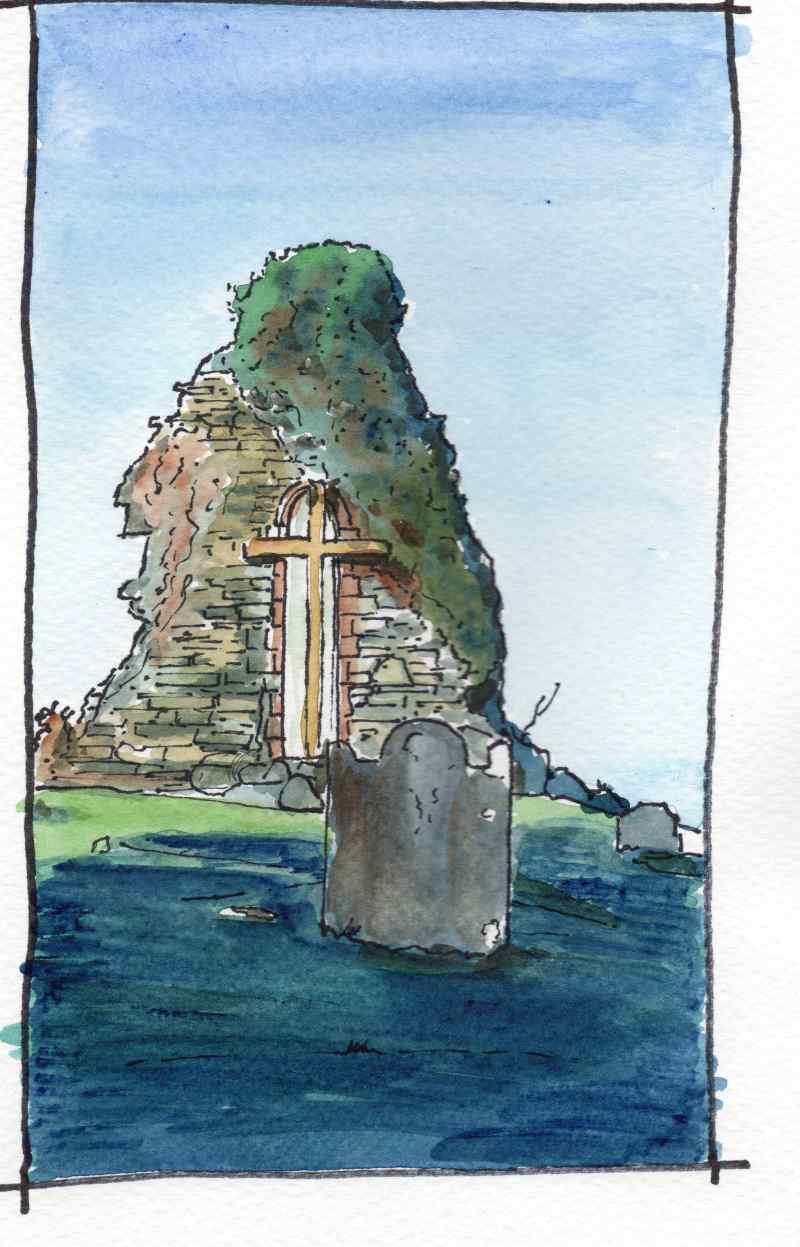St Aidan's Church Magilligan, is located further along the Duncrun Road. Like most medieval churches a comandiing position was selected and it has fine views of Lough Foyle below. The structure dates from the early medieval period and is said to have been founded by St Patrick. The single lancet window, in the east wall is thoight to be 13th century. A mortuary house in front of the gable has been traditionally understood to be the grave of St.Cadan, the patron of the church. The ruin is of the medieval parish church, repaired in 1622 & in use until the C18th when the Earl Bishop gave it to the Roman Catholic congregation on the completion of the new Church of Ireland. A pre-emancipation Catolic Church is constructed nearby.


